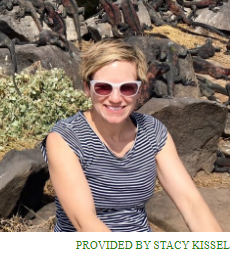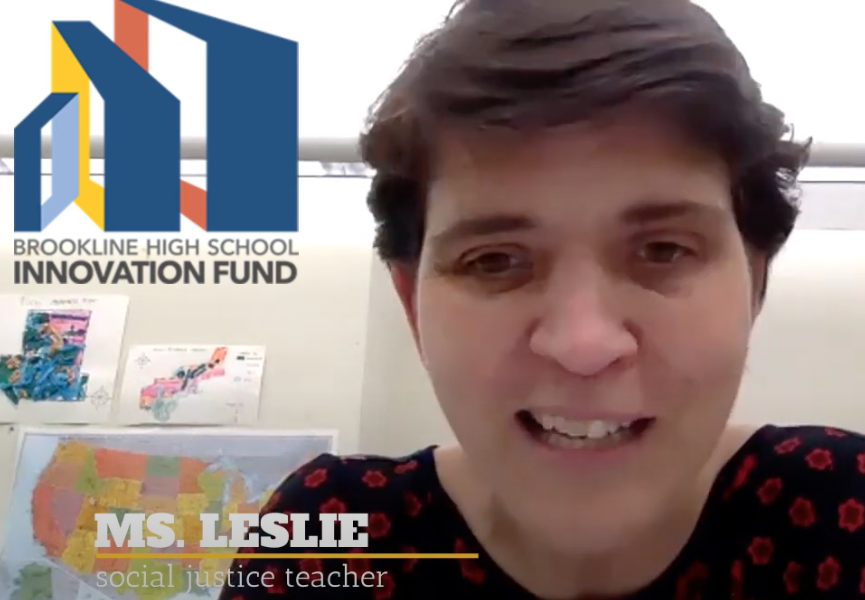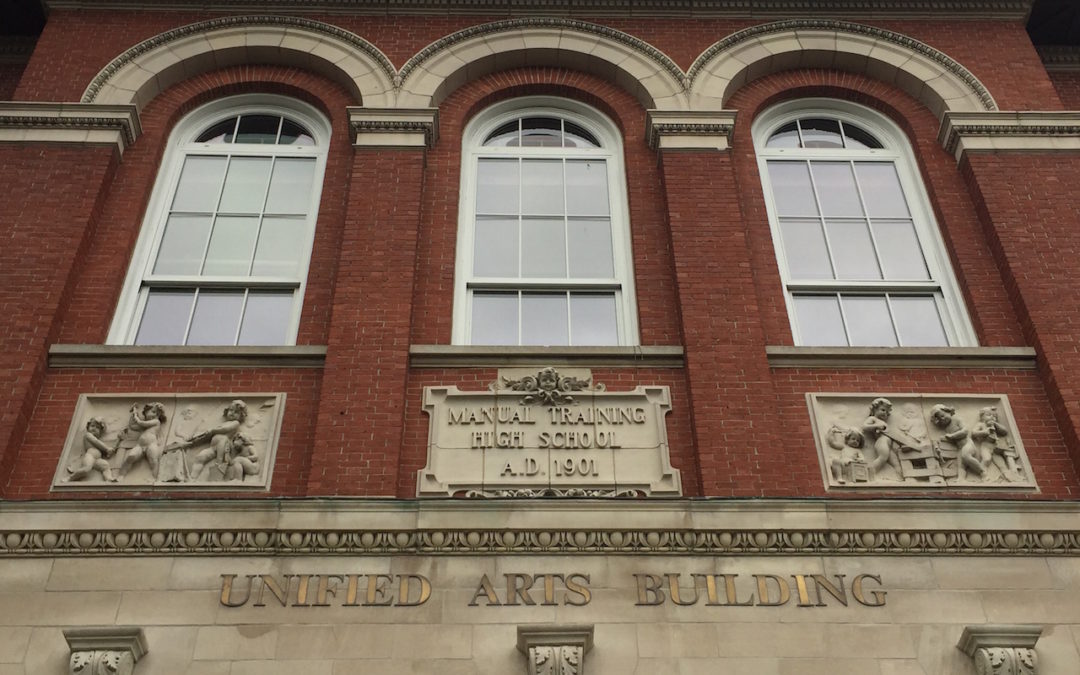
We are excited to announce upcoming investments in teaching and learning at BHS: two brand new courses will launch, four courses will continue through their final year of funding, and faculty will have the opportunity to reflect on pedagogy in the pandemic year at an upcoming summer summit. We are grateful to our generous donors whose support enables us to work with BHS leadership and faculty to fund these important programs.
Rethinking the Restaurant: Creating Community through Social Impact (NEW COURSE)
$66,000 Year One Investment
Rethinking the BHS restaurant will integrate the program more cohesively into curricular and co-curricular experiences for the entire BHS community, with students taking the lead in running its business operations in meaningful and creative ways. Faculty are excited by the multifaceted opportunities for innovation where the restaurant has potential as a lab for interdisciplinary learning with a social impact lens. For example, the restaurant could be a place where English Language Learners could introduce dishes from their home cultures as a special menu item; World Language teachers and students could work with the culinary program to design “take-over” menus for cultural observations or holidays; and students in Social/Food Justice or Environmental Action clubs could team with our culinary program to understand and improve how to sustainably run our business. Rethinking the Restaurant opens up outstanding experiential learning opportunities for students not only in the restaurant itself, but also for a diverse range of students in clubs, courses, and throughout the campus.
Faculty lead: Britt Stevens, Chair, Department of Career and Technical Education
Climate Science and Social Solutions (NEW COURSE)
$43,000 Year One Investment
Climate Science and Social Solutions is an interdisciplinary team-taught elective with instruction from both the scientific and historical perspectives. The course will enable students to engage in project-based learning by analyzing real world policy options related to climate change, and then research and posit definable and effective solutions. The goal is to have seniors engage in advocacy campaigns designed to shape perceptions on climate change and encourage personal mitigation strategies.
Faculty leads: Briana Brown (Science) and Roger Grande (Social Studies)
Faculty COVID-19 Reflection Summit
$10,000 for BHS faculty to convene this summer to reflect on lessons learned through the pandemic and how their important work funded by our COVID-19 Teaching and Learning Response Grants this year can inform pedagogy for 2021-22.
Continued Funding for Ongoing Courses
$186,000 for continued funding for four pilot programs through their final year in 2021-22: Experiential Physics for Ninth Grade; Brookline Lens; Hub; and Coding @BHS. Learn more about these programs here.
Read more about the impact of these investments in our June 2021 Letter from the Chair

Dear BHS Community,
As we wrap up the last of the end-of-year BHS traditions, congratulate the Class of 2021 and look forward to the summer and together-time with friends and family, I just want to take a moment to reflect on this extraordinary year.
This past year—my last as Chair of the Innovation Fund—was both challenging and rewarding. Fund volunteers have been working harder than ever to use the time and space that we were given to think differently about how we engage our donors in a remote environment, and how we expand on the funding that we give to BHS faculty to support teaching and learning at the high school.
Our primary focus this year has been on our COVID-19 Response Grants. Our COVID grant work started last June to prepare faculty for the upcoming school year and continued through the winter to support the shift to hybrid teaching and learning. It will culminate this summer with the COVID-19 Reflection Summit. The best practices and insights gleaned during the three phases of the COVID-19 grant will be carried forward to continue to positively impact students.
Our collaborative work with faculty has yielded stronger relationships and set up scaffolding for school-wide student success moving forward in a post-COVID classroom environment. A cohesive, new standard approach with all faculty using Canvas improved communications with students and made a huge difference in “equalizing” everyone’s experience. This work led to the creation of multiple progress reports for check-in with parents/guardians throughout the year. Intentional instruction on Executive Functioning (EF) helped students develop the skills needed both online and moving forward to in-person learning. And finally, an emphasis on SEL (Social Emotional Learning) and community building online made being back together now very meaningful.
The COVID-19 Response Grants allowed faculty to innovatively rethink teaching, curriculum development, and school culture as they responded to challenging logistical scenarios throughout the year. Interdepartmental collaboration last summer was groundbreaking and culture-shifting for BHS. Now as faculty emerge from remote and hybrid teaching, annual assessment of student content, SEL and EF are much more collaborative across departments and are more efficient and effective. The three phased COVID-19 Grants provided the faculty with the time and space to think and plan which was the impetus to this change. This time also provided an opportunity to reevaluate curriculum and to think about what worked and what didn’t. These are conversations that faculty will continue to have during the upcoming summer COVID-19 Reflection Summit.
As we look forward to the Fall, the investment in teaching and learning will continue. Two new programs were accepted for funding and will launch in the 2021-2022 school year. Briana Brown (Science) and Roger Grande (Social Studies) will lead Climate Science and Social Solutions; and Britt Stevens, Department Chair of Career and Technical Education, will launch Rethinking the Restaurant: Creating Community through Social Impact.
Climate Science and Social Solutions is an interdisciplinary team-taught course with instruction from both the scientific and historical perspectives. The course will enable students to engage in project-based learning by analyzing real world policy options related to climate change, and then research and posit definable and effective solutions. The goal is to have students engage in advocacy campaigns designed to shape perceptions on climate change and encourage personal mitigation strategies.
Rethinking the Restaurant will launch the restaurant program as a lab for interdisciplinary learning with a social impact lens. This is a space where English Language Learners could introduce dishes from their home cultures as a special menu item, where World Language teachers and students could work with the culinary program to design “take-over” menus for cultural observations or holidays, and where students in Social/Food Justice or Environmental Action club team with our culinary program to understand and improve how to sustainably run our business. These are only some of our curricular aspirations.
So, as you can see, the BHS Innovation Fund continues to have a broad and meaningful impact at BHS, despite the challenges of the past year. It is because of the incredible support of donors and volunteers that we were able to meet and exceed our fundraising and programmatic goals. I look forward to handing the leadership of this amazing organization over to Maureen Fallon and Masu Haque-Khan who will continue the work that was started more than 20 years ago. While I will be stepping down as Chair, I will continue to play an advisory role in the growth of the Fund.
I wish you all a wonderful, peaceful and safe Summer and send a hearty congratulations to the Class of 2021!
Warm Regards,
Ellen Rizika, Chair, BHS Innovation Fund Board of Directors

The Brookline High School Innovation Fund offers many unique opportunities to both faculty and students that can enhance their experience at BHS. Students have the ability to take an array of unique classes covering topics ranging from global current events to engineering and design. Faculty are also able to participate in many different programs that can add even more value to the work they are already doing at the high school. Through participation in these programs, teachers are able to support and create lasting connections with individual students, find inspiration and value as an educator, and have the ability to create or refine curriculum. Stacy Kissel is a teacher who has been able to experience all of those things through her time working with the Innovation Fund.
Establishing Tutorial as an Academic Resource
Kissel started working as a physics teacher at BHS in 1998. She became involved with the Innovation Fund very early on in its existence after former headmaster Bob Weintraub helped establish it at BHS. Throughout her time at the high school, Kissel has been involved in a number of different programs supported by the fund. She was one of the first teachers to participate in Tutorial, and most recently she has been working with other physics teachers to develop a curriculum for a new physics course. “I heard former Head of School Bob Weintraub talking about it during the early days when he was still raising money for this idea to encourage creativity in the school, and to give teachers opportunities to pilot new classes, and he was just so enthusiastic about it,” she explains. After hearing about a new program called Tutorial, Kissel knew that this was something she wanted to get involved in. As a part of the first group of Tutorial teachers, Kissel was able to collaborate with other teachers and decide what Tutorial should be and how it should work. “There were eight of us meeting to come up with what Tutorial is. We met frequently and talked about what the ideal model is and what we can do with the resources we have, and that was a very collaborative experience, since that was a completely new program.” Eighteen years later, Tutorial is a class where students can receive individualized support to help with their studies. Students work with their Tutorial teachers to identify areas where they can improve their academic performance, and spend their class time receiving support from their teachers and doing independent work. Tutorial continues to be a program that many students benefit from.
Throughout her involvement in Tutorial, Kissel gained a lot more insight into the daily schedules of her students outside of the physics classroom. She explains, “I think early on with Tutorial, it sort of changed me in that I got to see the big picture of a student’s day.” When previously she only knew what students were doing within the walls of her classroom, teaching Tutorial allowed her to see what students were learning in other courses. “It was especially great for me to see what the kids were doing in math, and how that meshed with what we were doing in physics.” Being more aware of the other work students were doing was also a way that Kissel made sure she wasn’t assigning a large physics project on top of other large assignments they were working on for other classes, as not to overwhelm them.
Another benefit Kissel gained from teaching Tutorial were the connections she was able to make with her students. She really valued having meaningful relationships with students and really appreciated it when there were opportunities for her to create those meaningful relationships. Tutorial was one place where Kissel could begin to do so. When Tutorial started only 40 kids in the entire school were enrolled, so for the first few years she taught Tutorial with the same teacher every year and had the same kids in her class. “There was a kid, for example, that I had freshman year in my physics class, and then I had in Tutorial sophomore, junior, and senior years. I had that kid for four years of high school and I knew him so well by the end, and that was at the beginning of the program, but what I loved about Tutorial was that they’re with the same teacher and you’re with the same kid.” In this case, Kissel was able to create and maintain a relationship with that student throughout the four years they were at BHS. Although the program has changed and grown a lot over the years, and teachers no longer have the same students every year, she says that you still get to know the students very well. “Even just one year with kids, you get to know them so well having them in a small group four times a week.”
Building Connections with Students
There have been a number of ways Kissel has been able to create bonds with students throughout her career, whether it was simply in her physics classroom, or during her time teaching at the Old Lincoln School, or accompanying BHS students on the Chinese Exchange program. One experience that really stood out from our conversation was from the Family Partnership program. The Family Partnership program, founded in 2007, was a program in partnership with the BHS guidance department that was working towards narrowing the achievement gap between students. Part of the purpose of the program, as explained by Kissel, was to “Team up with ninth graders who were identified as being kids who might just slip through the cracks. They weren’t the most struggling students or necessarily on their teacher’s radar, but kids who would probably struggle a bit, but not enough to ever warrant the attention of their guidance counselor or dean.” Teachers would get paired up with one or two students, and they would meet up once a week so that the students could have a trusted adult in the school that they could turn to if they ever needed help and didn’t know where to get it from. Kissel was paired up with two students that she met with that year, but it was with one student that she was really able to create a lasting relationship. Every week the two of them would go to Virginia’s Cafe near the high school and talk over a piece of cake or tea. “We just really connected. We liked some of the same things; we both really liked cats and we are both interested in Japanese culture, and we just bonded over random things like that.” Even though the program wasn’t integrated after the first three years, Kissel continued to meet with the student constantly throughout their four years of high school. Their relationship continued even after the student graduated from BHS, meeting up a few times each year, and most recently meeting up for a socially distanced picnic outside. “She’s now 28! And because we are both vaccinated now, she recently came over for dinner. We’re not in touch everyday, but she is a person who I will text about things or email or we’ll meet up and go to a movie or go out to dinner. It’s been great because as a teacher, there is generally this borderline and some things you aren’t really supposed to do with your students, like go out to a cafe after school, but in this program that’s what you did and it was nice that it broke down that boundary between teacher and student.”
Reimagining 9th Grade Physics
Aside from allowing Kissel to build upon her relationships with her students, the Innovation Fund has also given her another really valuable gift. During the 2019-2020 school year, Kissel worked with other teachers to create the new curriculum for 9th grade physics. While Kissel has worked collaboratively with other teachers in the past, it’s nothing like how they have been able to work together now because of this grant. “I have definitely worked collaboratively with teachers over the years somewhat, but it’s usually after school, you’re tired and then you walk into someone’s room and they might have some interesting lab setup that you talk about and then you might collaborate on something, or talk during lunch or during the little collaboration time we have built into our schedule. But having time set aside each week for deliberate collaboration with other physics teachers is something that I really have not had in this quantity.” The physics teachers are completing year two of a three year grant to develop a new course, but it’s already given them something that they don’t often get, which is time. “I think really one of the most important things that the fund does is give teachers course release time so that they can collaborate with other teachers during the school day as opposed to collaborating after school when you have a pile of papers waiting for you and other commitments. As a teacher there’s just never enough time to plan everything you want to do, and that really is the best gift, the gift of time; it’s the biggest gift that the fund can give.”
Apart from the collaborative time Kissel had to spend working with other teachers, developing the new course has also had an impact on the teaching she is doing in her own physics classroom. “It has changed my teaching to encourage more collaboration among students, more hands-on activities especially for projects, and also a deeper development of scientific skills or mathematical skills like graphing, but also just skills of asking questions and working with others in a group in a constructive way. So my work with the fund course definitely has changed my way of teaching.” As a result, students get to participate in engaging assignments and learn valuable skills that they will continue to benefit from throughout their time at BHS.
— Interview by Maya Rozen, BHS Alumna, July 2020





